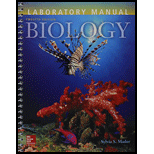
Concept explainers
How may a pedigree pattern be used to determine if a disease is autosomal dominant or autosomal recessive?
To determine:
How pedigree pattern can be used to determine whether a disease is autosomal dominant or autosomal recessive.
Introduction:
Pedigree determines the biological relationship between an individual with their family or ancestors by using the standard symbols. The pedigree is important to predict as it helps in determining the dominant or recessive inheritance pattern of the traits and the genetic disorders related to it.
Explanation of Solution
Pedigree analysis theoretically determine about the transmission pattern of a genetic disease from one generation to the other. A disorder could be in autosomal dominant, autosomal recessive and X linked dominant or recessive conditions.
The characteristics of autosomal dominant traits are:
• The one affected parent can produce affected progeny. In autosomal dominant inheritance, the trait will occur in every generation.
• The affected number of male and females are roughly equal.
• In autosomal dominant the expression of a trait does not depend on the gender of an individual.
• Each affected parent may not produce affected offspring as they could be carrier of the dominant disorder.
• The probability of inheriting the disease by each offspring from both affected parents is 0.5.
The characteristics of autosomal recessive traits are:
• In autosomal recessive, the trait will not occur in every generation.
• The affected number of male and female are not equal.
• Both normal parents could produce affected offspring as they could be carrier of the affected allele.
• The probability of inheritance of disease by one out of every four offspring is 0.25.
With the help of above characteristic, it is easy to use pedigree analysis used to determine whether a disease is autosomal dominant or autosomal recessive.
Depending upon the characteristics of dominant and recessive disorders, the transmission of a disorder could be predicted through pedigree.
Want to see more full solutions like this?
Chapter 11 Solutions
Lab Manual for Biology
- How is pedigree analysis used to determine whether a trait is inherited in an autosomal-dominant, autosomal-recessive, or X-linked pattern?arrow_forwardIs this pedigree dominant or recessive. Which best defines this pedigree Autosomal or sex-linked?arrow_forwardFor each of the following modes of inheritance, describe the features that will be exhibited in a pedigree in which the trait is present: autosomal recessive, autosomal dominant, X-linked recessive, X-linked dominant, and Y-linked inheritance.arrow_forward
- Draw a family tree or pedigree showing the difference in inheritance between an autosomal dominant disorder and an autosomal recessive disorder.arrow_forwardWhat is a carrier of a genetic trait?arrow_forwardCould the trait indicated in the pedigree above be caused by an autosomal gene? Hint: consider each type of autosomal inheritance and see if it could explain the inheritance of the trait. a) Yes, an autosomal dominant gene could explain this trait. b) Yes, an autosomal recessive gene could explain this trait. c) No, an autosomal gene could not account for this pedigree. d) Yes, A and B are true.arrow_forward
- Using the pedigree chart attached: Above is a pedigree for colorblindness. Based on the pedigree, is the disease dominant or recessive and is it sex-linked or autosomal? Why? Furthermore, what is the probability that 18 on this chart is affected but the condition, and what is the probability that 18 is a carrier? Why? Are the probability of being a carrier and an affected individual different? Why?arrow_forwardDescribe the characteristics of a pedigree for an autosomal dominant and an autosomal recessive trait.arrow_forwardWhich genotype indicates a carrier of an autosomal recessive trait? bb BB Bbarrow_forward
- Hypophosphatemia is a dominant genetic disorder caused by a deficiency of phosphates in the blood. Assuming the other parent is free of the disorder, males with the disorder will pass it on to all their daughters, but not their sons. Females with the disorder will pass it on to approximately half of their children. Is this pattern of inheritance autosomal or sex-linked? Draw Punnett squares to show the inheritance pattern of the disorder in each of the two scenarios.arrow_forwardCystic fibrosis (CF) is an autosomal recessive trait. A three-generation pedigree is shown below for a family that carries the mutant allele for cystic fibrosis. Note that carriers are not colored in to allow you to figure out their genotypes. Normal allele = F CF mutant allele = f What is the genotype of individual #13? A) ff B) FF C) Ff D) it is impossible to tellarrow_forwardIf both parents have an autosomal dominant trait, what can you say about their children? Explainarrow_forward

 Human Heredity: Principles and Issues (MindTap Co...BiologyISBN:9781305251052Author:Michael CummingsPublisher:Cengage Learning
Human Heredity: Principles and Issues (MindTap Co...BiologyISBN:9781305251052Author:Michael CummingsPublisher:Cengage Learning Human Biology (MindTap Course List)BiologyISBN:9781305112100Author:Cecie Starr, Beverly McMillanPublisher:Cengage Learning
Human Biology (MindTap Course List)BiologyISBN:9781305112100Author:Cecie Starr, Beverly McMillanPublisher:Cengage Learning


